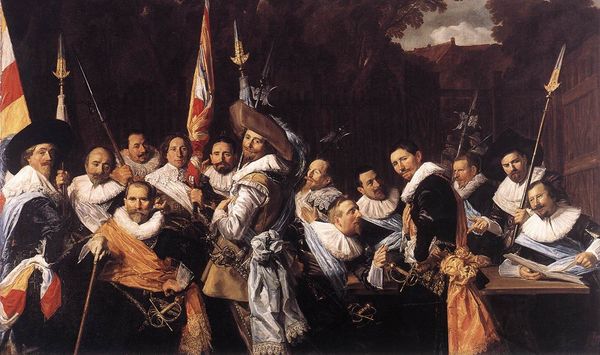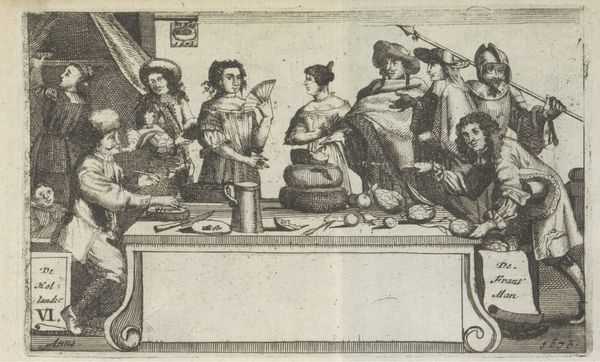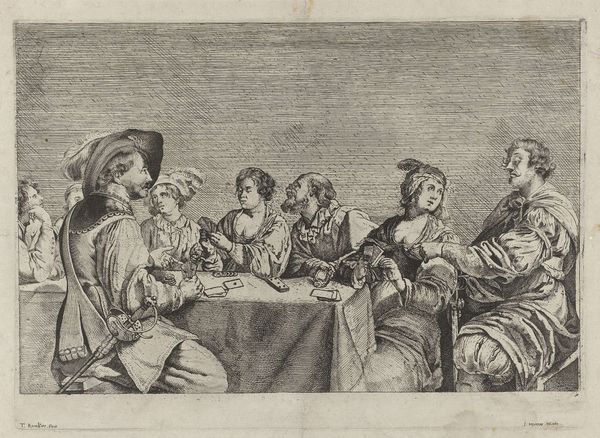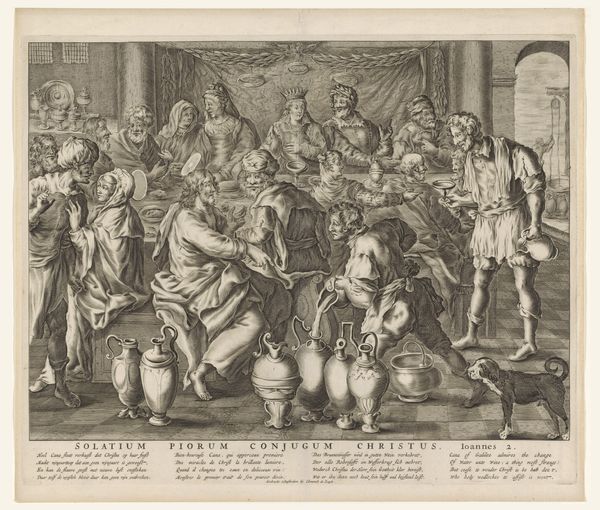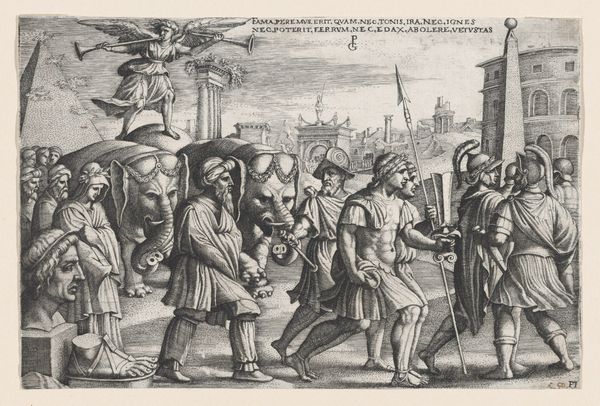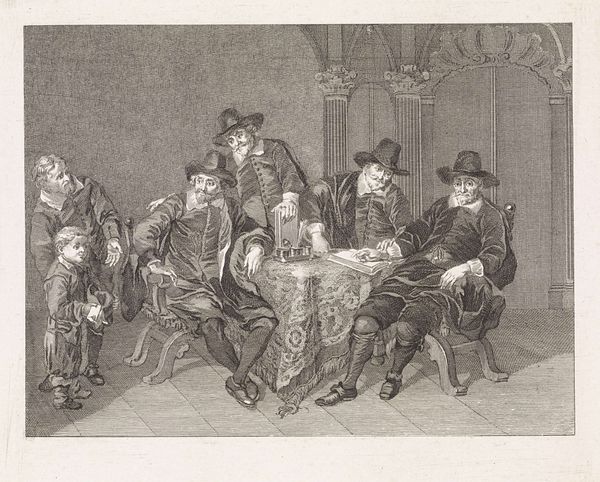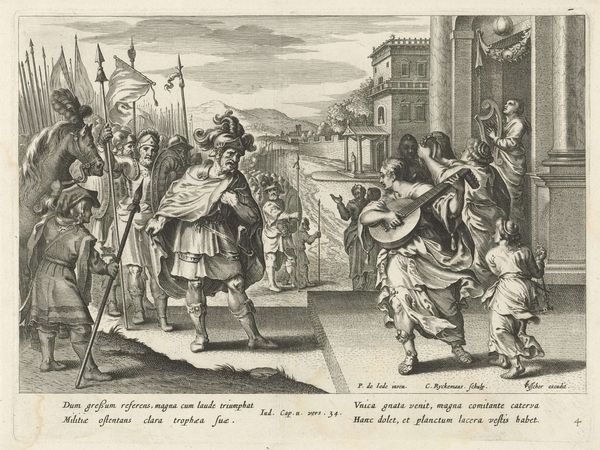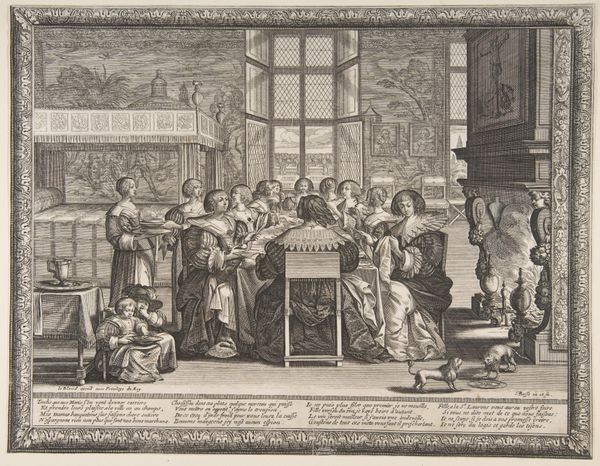
Banquet at the Crossbowmen’s Guild in Celebration of the Treaty of Münster 1648
0:00
0:00
bartholomeusvanderhelst
Rijksmuseum
painting, oil-paint, glass
#
portrait
#
narrative-art
#
baroque
#
dutch-golden-age
#
painting
#
oil-paint
#
painted
#
glass
#
oil painting
#
group-portraits
#
genre-painting
#
portrait art
Dimensions: height 232 cm, width 547 cm
Copyright: Rijks Museum: Open Domain
Bartholomeus van der Helst painted this scene on canvas, using oil paint, to commemorate the Banquet at the Crossbowmen’s Guild. The real star of this artwork is the textile. Sumptuous fabrics feature in the costumes of the men who populate this painting, their attire expertly articulated by van der Helst. You'll notice the contrast between the matte finish of some fabrics and the sheen of others, achieved by the skilled manipulation of oil paint. Silks, satins, and velvets, all imported luxury goods, were highly prized for their visual and tactile qualities. Painting such textiles wasn't just about capturing their appearance. It was about signaling the wealth and status of the people who wore them, who were members of the civic guard. Their elaborate attire reflects their position in society, enabled by trade routes and the labor of textile workers, near and far. This painting invites us to consider the value we assign to objects and the stories they tell about trade, labor, and social status. It asks us to challenge the boundaries between art, craft, and the wider world of materials and making.
Comments
rijksmuseum about 2 years ago
⋮
18 June 1648: a banquet is taking place at the Amsterdam crossbowmen’s guild. The occasion was the signing of the Treaty of Münster, which marked an end to the war with Spain. The captains of the civic guard company shake hands as a sign of peace, and the drinking horn is passed around. The poem on the drum proclaims the joy of Amsterdam’s armed militia that their weapons can henceforth be laid to rest.
Join the conversation
Join millions of artists and users on Artera today and experience the ultimate creative platform.
